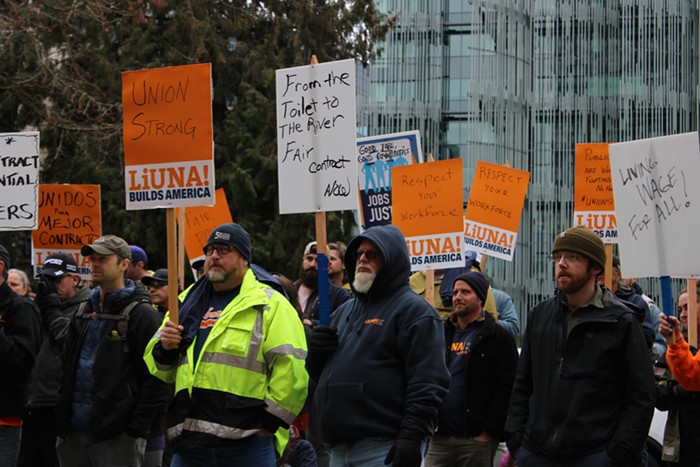Hey, remember when the New Yorker scared the shit out of everyone in Seattle—and Tacoma, Portland, Eugene, Salem, Olympia, Seaside, Long Beach, and Vancouver—with that article about the 9.0 earthquake that will sooner or later (probably sooner) wipe out "everything west of Interstate 5"? ("The Really Big One," Kathryn Schulz, July 20, 2015.) Remember how scared you were after reading that story? Remember the plan you made to pull together an earthquake preparedness kit? Remember how you swore you'd never visit the coast of Washington or Oregon again because you didn't want to be taking a selfie with Haystack Rock when that "a seven-hundred-mile liquid wall" swept over the beach?
Well, today New York Magazine did for the world what the New Yorker did for the Pacific Northwest two years ago. But instead of "the worst natural disaster in the history of North America" (which would be over in five minutes), New York's terrifying cover story is about climate change—which has already begun, will go on for centuries, and could render the earth uninhabitable and lead to the extinction of our species. ("The Uninhabitable Earth," David Wallace-Wells, July 9, 2017.) Charles linked the piece at the bottom of Morning News, but I wanted to highlight it because... well, you really should read it.
Wallace-Wells:
The Earth has experienced five mass extinctions before the one we are living through now, each so complete a slate-wiping of the evolutionary record it functioned as a resetting of the planetary clock, and many climate scientists will tell you they are the best analog for the ecological future we are diving headlong into. Unless you are a teenager, you probably read in your high-school textbooks that these extinctions were the result of asteroids. In fact, all but the one that killed the dinosaurs were caused by climate change produced by greenhouse gas. The most notorious was 252 million years ago; it began when carbon warmed the planet by five degrees, accelerated when that warming triggered the release of methane in the Arctic, and ended with 97 percent of all life on Earth dead. We are currently adding carbon to the atmosphere at a considerably faster rate; by most estimates, at least ten times faster. The rate is accelerating.
Submerged cities (so long Miami), which get all the press, are the least of our worries, Wallace-Wells writes. Lethal heatwaves will force us to abandon cities that aren't under water, food shortages will lead to famines that kill hundreds of millions, the air will be unbreathable, wars will break out, the oceans will die—but, hey, if the heat, starvation, war, and the end of happy hour sushi specials don't kill you, the bugs will:
There are now, trapped in Arctic ice, diseases that have not circulated in the air for millions of years—in some cases, since before humans were around to encounter them. Which means our immune systems would have no idea how to fight back when those prehistoric plagues emerge from the ice.
The Arctic also stores terrifying bugs from more recent times. In Alaska, already, researchers have discovered remnants of the 1918 flu that infected as many as 500 million and killed as many as 100 million—about 5 percent of the world’s population and almost six times as many as had died in the world war for which the pandemic served as a kind of gruesome capstone. As the BBC reported in May, scientists suspect smallpox and the bubonic plague are trapped in Siberian ice, too—an abridged history of devastating human sickness, left out like egg salad in the Arctic sun.
It's hard not to read Wallace-Wells' piece without despairing. Trump taking us out of the Paris climate accord may speed our demise by a few decades, but we're fucked—we're already fucked—and electric cars aren't going to save us. So might as well have that affair and rob that bank and gas up your that SUV and head for the coast. Haystack Rock is gonna wind up underwater one way or another—temporarily, thanks to that tsunami; forever, thanks to sea level rise—so you might as well go get that selfie. But Wallace-Wells ends his long and terrifying piece on an optimistic note.
Go read it and then decide for yourself whether that optimism is justified, delusional, desperate, or all of the above.













